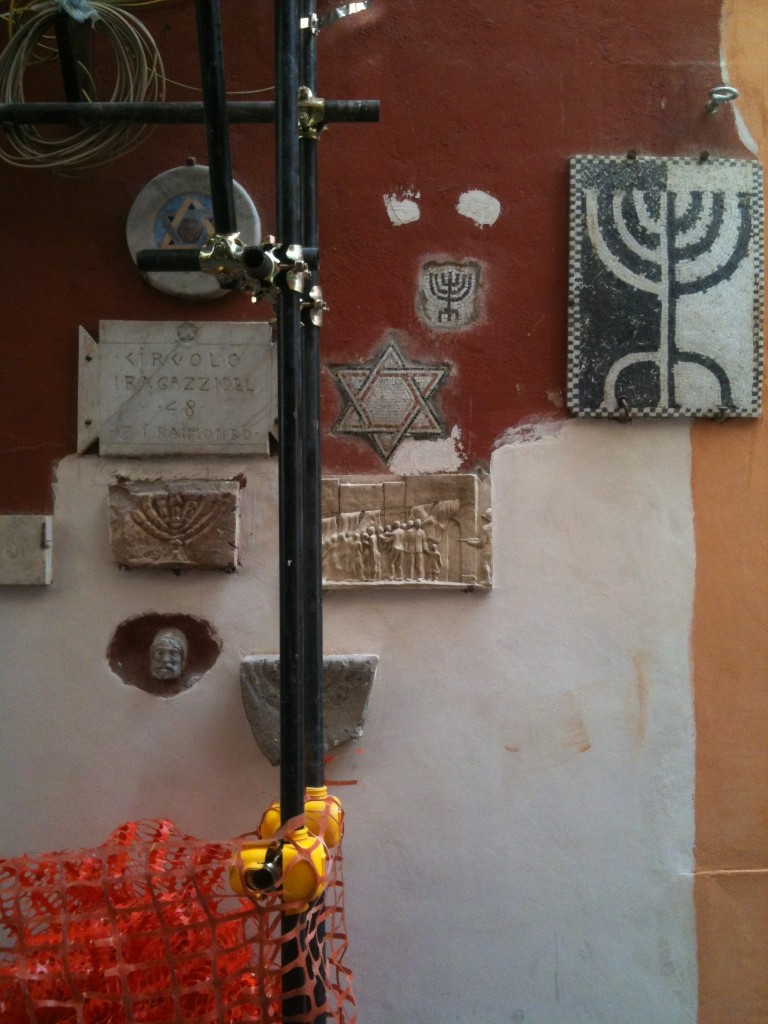
This semester I am living in one of Cornell’s apartments located in the historical Jewish Ghetto (sometimes called the “ex -Ghetto”). When I learned this before coming here I had few expectations of what it would be like to live there. In all my times visiting Rome I had passed through the Ghetto once or twice without taking much note of the environment. But in my first weeks here I have become inexpressibly fond of the sense of community and culture that flourish in this compact neighborhood. Like many of Rome’s piazzas and squares, the main stretch of the Ghetto is tucked away between ruins and side streets, and is easily missed although only a block from the Tiber and the Via Arenula. Although it is in the Centro Storico, the Ghetto is far less touristic than the rest of the historical city; there is a sense of privacy that may discourage many wanderers. As I feel quite close to the area I would like to share some of the things that I have come to appreciate, as well as some history on the area.
The Ghetto, an area adjacent to the ruins of the Portico d’Ottavia, has been the voluntary and involuntary center of the Roman Jewish community for centuries. From 1555 until 1848 the Ghetto was closed off by the Pope, forcibly containing the Jewish community within its walls; however, when the Ghetto was opened most people chose to continue living in the rich cultural community that had developed there. During the Second World War the Ghetto was closed off again, and its inhabitants were deported to concentration camps with the cooperation of the fascist regime. Despite the decimation of the population following these horrible events, people returned and rebuilt, forming the close and complex community that exists today. The Ghetto is a proud and persistent place, with a long and often dark history, but it is also a very real and present neighborhood today. The things that I love about the Ghetto are not the many late night restaurants and bars that attract throngs of Romans on weekend nights when the Via del Portico d’Ottavia is bustling with activity, but rather the quiet, old and strange places that give the area its understated authenticity.

The other day as I was walking to class I passed by the small storefront of the Jewish Info Point. Outside was a table where miniature jars of honey and various pamphlets and booklets on Jewish culture were being offered to passersby. As I have basically no knowledge about any Jewish customs or holidays I went inside to ask about the honey, which was being given out on the occasion of Rosh Hashanah, where honey and apples are eaten together as a symbolic reminder of the sweet things we hope for in the coming year. I was moved by this presentation and after some research found that the honey came from the Deputazione Ebraica. This is a social service organization that exists within the Jewish community. They provide professional and voluntary services for those in need, including the elderly and those seeking legal counsel. The Deputazione Ebraica also provides information for and about the Jewish community, including guides for eating Kosher in Rome, information on festivities and holidays and information for tourists interested in Jewish Culture in Rome. This organization is part of the fabric of the community and a great source for information on how to become informed or involved.
For more historical information one can visit the Museo Ebraico, housed in the former synagogue along the Tiber.
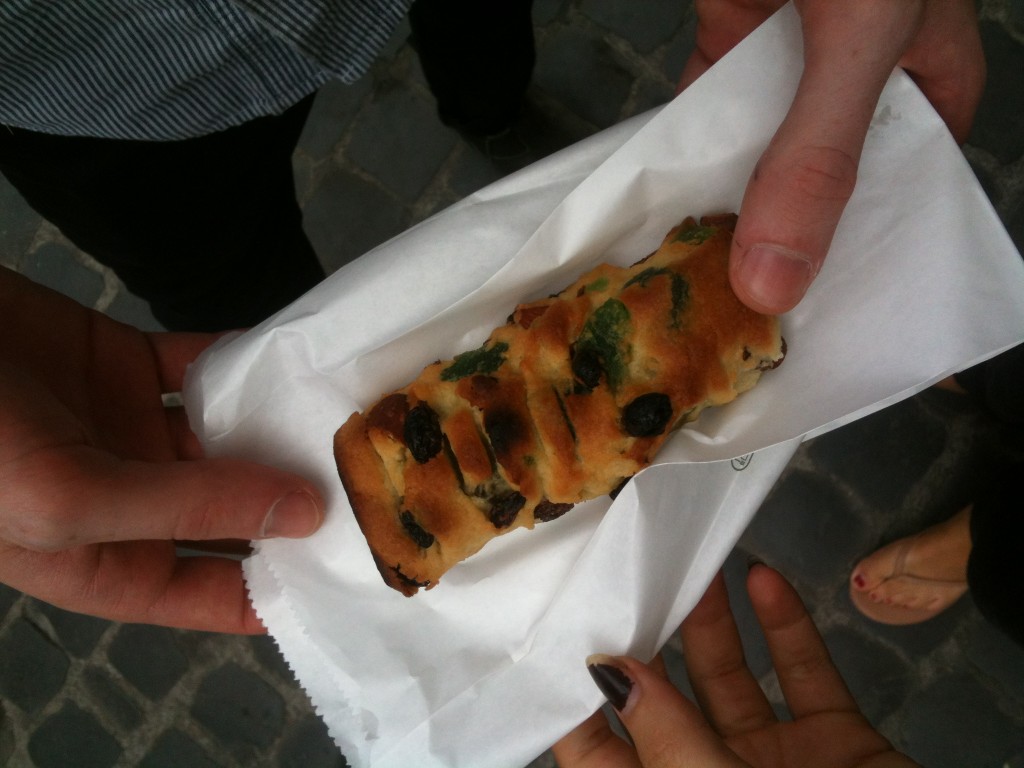
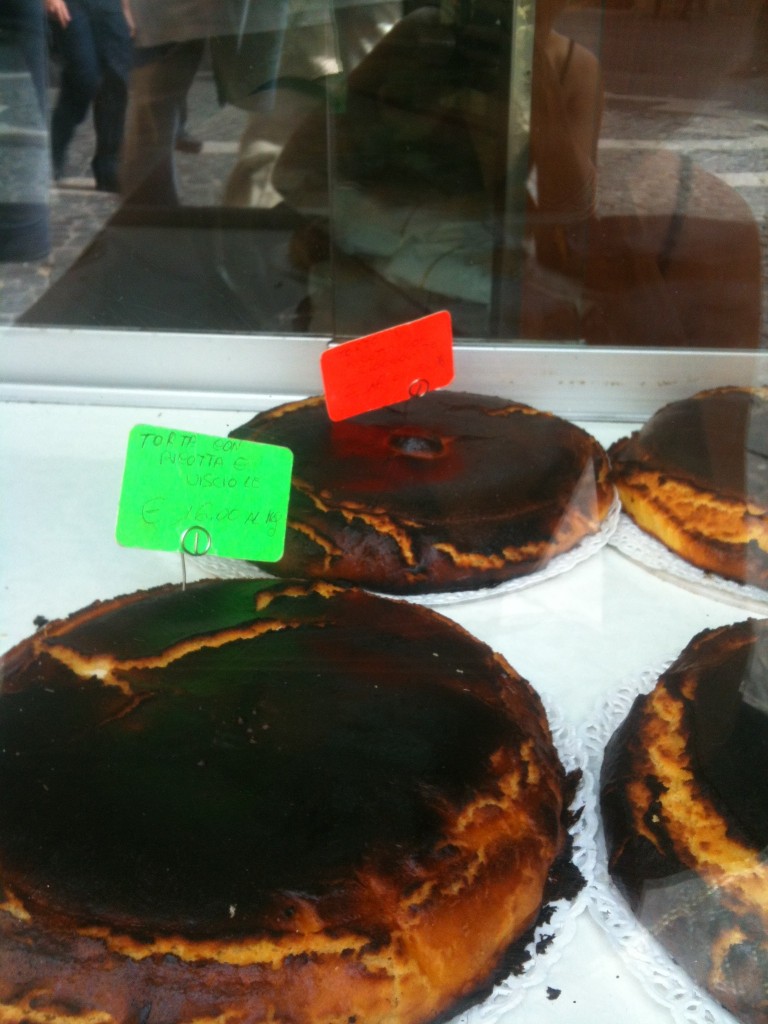
There are two places in the Ghetto that I recommend to visit during the day that embody its spirit in very different ways. The first is an unmarked bakery, called Boccione, which sells only a handful of different confections, but each is very special. There is always a line out the door as the tiny space can only accommodate about three people at once. It is not a place to pastry gaze, one must know what one wants and be able to order without hesitation. While the bakery offers some sweet breads and special biscotti, the real treasures are the customary Pizza Ebraica, a sweet dense sheet cake full of dried fruits and nuts, and slices of their special ricotta and cherry tart, a family recipe. This place is full of life and well worth the hectic visit.
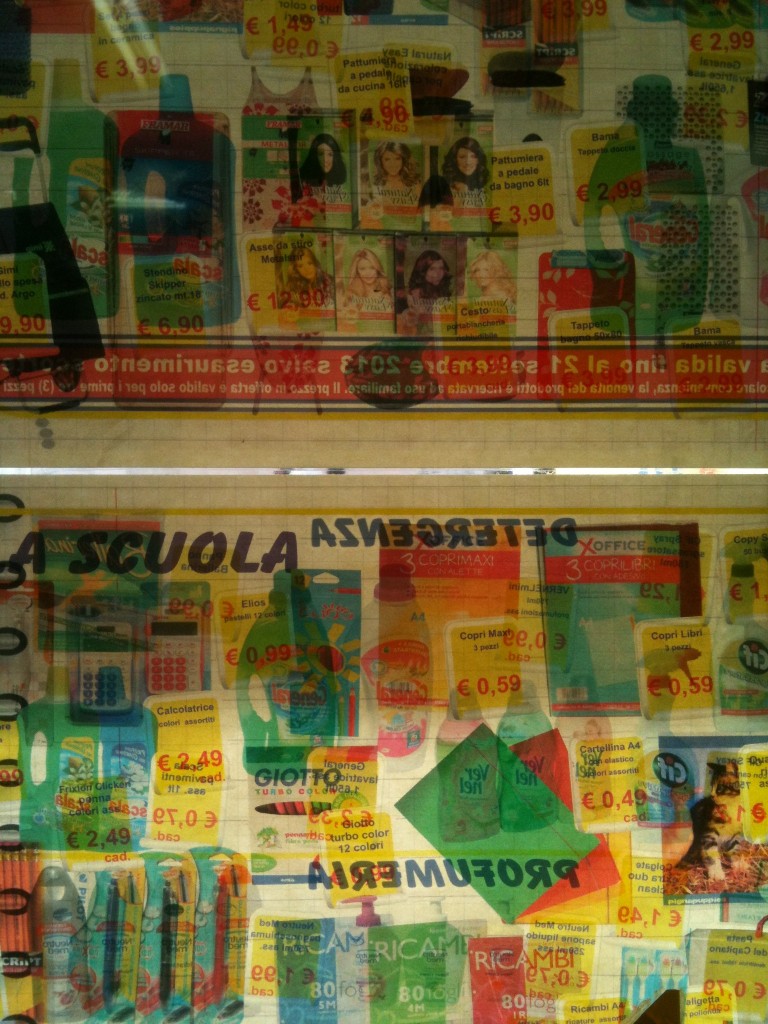
A few doors down is my other favorite place in the ghetto, a no-nonsense store for household goods, you can find anything you need here. It is clearly a place that serves a functioning community and I thoroughly enjoy coming here for my everyday needs and feeling very much a part of neighborhood. This is one of many affordable shops along the Via del Portico d’Ottavia selling things like undergarments and tableware for prices otherwise unheard of in the city center. The ghetto also boasts its own Antico Forno, as well as a nice butcher, a health food store and other alimentari.
The Ghetto is also worth visiting at night when it becomes something of a party zone as crowds of young people and neighborhood residents congregate on the square. If you are eating in one of the many [varying levels of kosher] restaurants there it is mandatory that one try the traditional carciofi alla giudia, fried artichoke, that the ghetto is known for. Another important dish is Baccalà, salted cod, not fried Roman style, but rather served in tomato sauce with raisins and pine nuts.
On some nights if one walks to the ruins of the Portico d’Ottavia there are live classical music concerts and plenty of places to sit and draw in the ruins while listening to a piano and violin duet before it gets dark.
The Ghetto has been very much a haven for me here in Rome, a welcome escape from the tourist traffic of Centro Storico. It has given me the sense of community and familiarity I was used to growing up in a small town, and although I am not religiously affiliated, I feel like there is a place in this little fraction of the city where I can exist and participate in an authentic self-sustaining neighborhood.
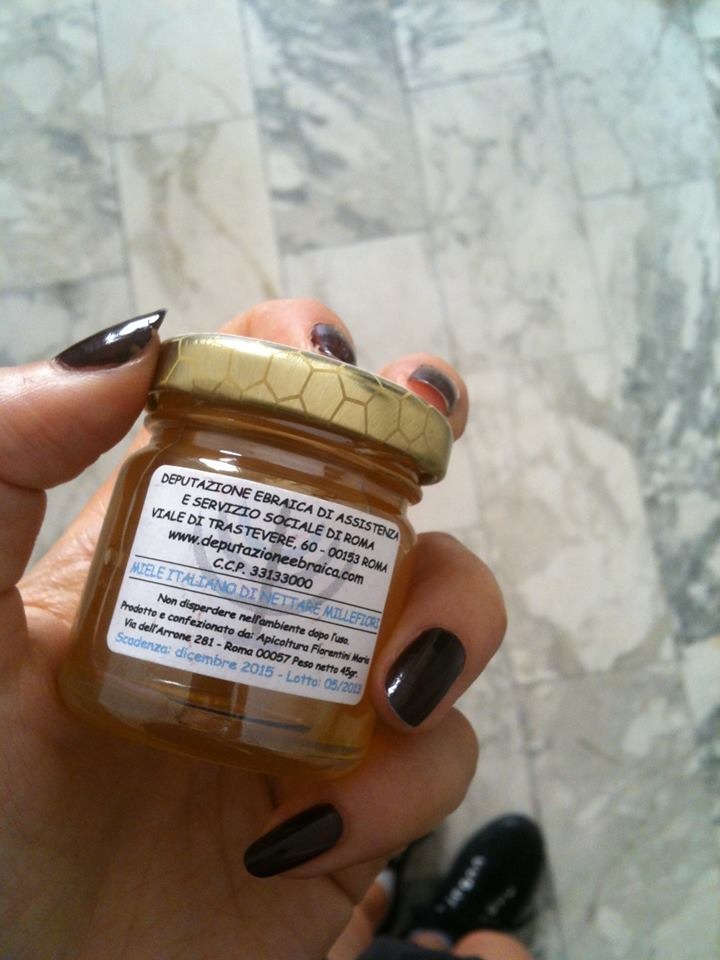
Here are my sources and useful addresses for more information:

Thank you for this beautiful interpretation of your neighborhood. As a parent of a student in your program, it is wonderful to read about your experiences and see it from a different perspective. Enjoy your time of study and travel in Rome and throughout Italy.